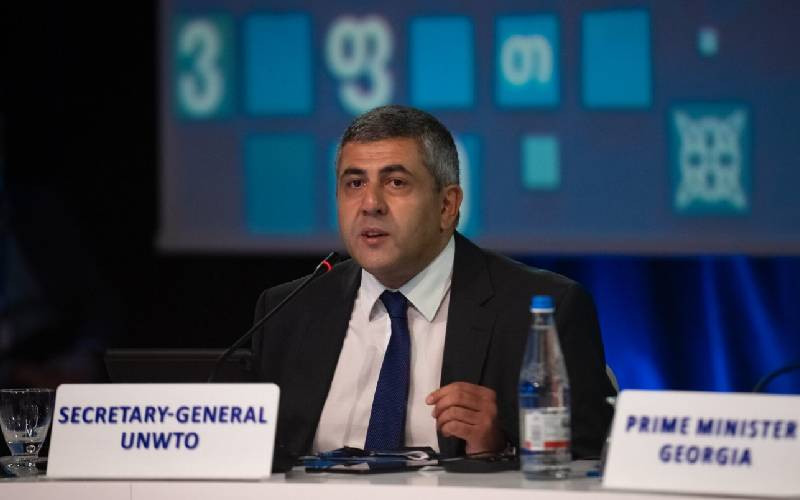By Amos Kareithi
The powers that be have perfected methods of wishing away their nemesis.
From Europe to Africa to Asia, dried bones of yesteryear dictators and liberators litter unmarked graves; their ashes are strewn all over, unremembered.
When America killed global terror kingpin Osama bin Laden and secretly disposed his body at sea in an undisclosed location, tongues started wagging, but history is replete with similar incidences.
Adolf Hitler achieved a rare feat by uniting Germany and triggering off a major military face off which consumed millions, and shaped the face of the world.
He polarised the world, touched off a major conflict, which culminated in the use of biological warfare that claimed millions of civilians.
But when the allied forces closed in on him, the leader, who had a cult like following, turned his gun on his head and left his pursuers to desecrate his remains.
Lurid details are given of how the Fuehrer was first burnt and his ashes flushed down the sewerage system in Ukraine.
Berlin bunker
Some accounts indicate that after Hitler shot himself in his Berlin bunker, his body was burnt by his staff, along with the remains of his lover Eva Braun.
Soviet troops seized the remains when they captured the bunker. But what happened later has been shrouded in mystery and speculation.
Secret communications between Soviet counter-intelligence units in Germany and the Government in Moscow tell of repeated burials and exhumations of the remains, and of their final destruction by fire in 1970.
Now all that remains is a four inch fragment of his skull, bearing a bullet hole exit, displayed in Moscow for public viewing, while the jaw allegedly used by Soviet investigators to identify the Nazi leader is said to be hidden in secret archives.
Despite the scattering of his remains, Hilter and the organisation he founded, the Nazi, have continued to influence and inspire future generations with some secret organisations copying its mode of dress in ideology of a super human race.
Nearer home in Somalia, Sayyid Muhammad Abdullah Hassan terrorised the British for 20 years until they could stomach his antics no more.
Hassan, the man the British christened Mad Mullah, had set up a separate state in Dervershi, from where he continued humiliating the British.
When he died on December 20, 1920 aged 64, the British authorities were keen to make his final resting place a mystery, and for fear his adherents would transform it into a shrine.
Somali region
His grave is believed to be somewhere close to Imay town of the Somali region of Ethiopia, but the exact spot of the tomb is not known.
There have been attempts to trace and exhume his remains and rebury them at his old castle at Imme, but most people who may have known the exact place are either dead or senile.
In Kenya, the British colonialists used the same script when Waiyaki wa Hinga was killed in 1902 as he was being transported to Mombasa for trial. Despite claims that he was buried alive in Kibwezi, the grave has not been traced despite spirited search by his descendants and the Government.
Koitalel arap Samoei, who also fiercely fought off the European invasion, was lured into a meeting in Nandi Hills, where he and some of his clansmen were shot to death.
The seer’s head was severed from his body and flown to Britain, and his family had to bury a headless body, where a mausoleum has since been erected.
But the biggest mystery of modern times was perpetuated by the British in 1956, when Dedan Kimathi, perceived by the colonial government as the head of the Mau Mau freedom fighters, died.
Although prison authorities in Kamiti executed Kimathi, his grave has remained one of the most guarded secrets.
Efforts by the Government to trace, exhume and accord Kimathi’s remains a decent burial have been in vain.
Several trips to Kamiti and Kin’gong’o in Nyeri by human rights activists have turned into a wild goose chase, as Britain remains tight lipped.
In Cambodia, Pol Pot, who in life was perceived by some as a brutal dictator whose regime killed an estimated one million people, assumed a curious stature after his death.
Pot’s death in 1998 heralded the end of the brutal career of a man responsible for overseeing one of the worst genocides of the 20th century.
His victims died from between 1975 and 1979 from execution, starvation, and disease — as the Khmer Rouge reigned supreme.
All suspected intellectuals were killed and others would be condemned to a painful death for wearing glasses or knowing a foreign language.
The Khmer Rouge government collapsed in 1979 after Vietnam invaded Cambodia after a series of violent border confrontations.
Tourist attraction
Pol Pot and his forces once again fled to the northern jungle as evidence of their atrocities was broadcast around the world.
Ironically, after his death, millions of Cambodians and also tourists have continued to troop to his grave in search of good luck.
But the act of concealing the body of an annihilated rival is not the preserve of law enforcement agents; the mafia have excelled in making their adversaries disappear without trace.
One of the most memorable mysteries is the disappearance of controversial trade unionist Jimmy Hoffa, who ran afoul with the mafia.
Hoffa earned the wrath of lawyers after he was convicted of fraud in 1964, together with six other leaders.
He was, however, granted presidential pardon after his sentence was commuted to a sentence served in 1971, but instructed to stay away from labour matters for ten years.
But just when he was trying to have the orders reversed, he was grabbed from the parking lot of Machus Red Fox restaurant in Detroit.
That was the last time Hoffa was heard of, and despite years of FBI carrying out extensive searches following tips from Mafia sources, no one knows where he was interred.
There have been numerous rumours about Hoffa’s ultimate whereabouts, including a tip off attributed to mafia hit man Richard "the Iceman" Kuklinski, who died in prison after he ‘confessed’ that Hoffa’s body was compacted in a car that later became scrap metal in New Jersey.
 The Standard Group Plc is a multi-media organization with investments in media
platforms spanning newspaper print operations, television, radio broadcasting,
digital and online services. The Standard Group is recognized as a leading
multi-media house in Kenya with a key influence in matters of national and
international interest.
The Standard Group Plc is a multi-media organization with investments in media
platforms spanning newspaper print operations, television, radio broadcasting,
digital and online services. The Standard Group is recognized as a leading
multi-media house in Kenya with a key influence in matters of national and
international interest.
 The Standard Group Plc is a multi-media organization with investments in media
platforms spanning newspaper print operations, television, radio broadcasting,
digital and online services. The Standard Group is recognized as a leading
multi-media house in Kenya with a key influence in matters of national and
international interest.
The Standard Group Plc is a multi-media organization with investments in media
platforms spanning newspaper print operations, television, radio broadcasting,
digital and online services. The Standard Group is recognized as a leading
multi-media house in Kenya with a key influence in matters of national and
international interest.









